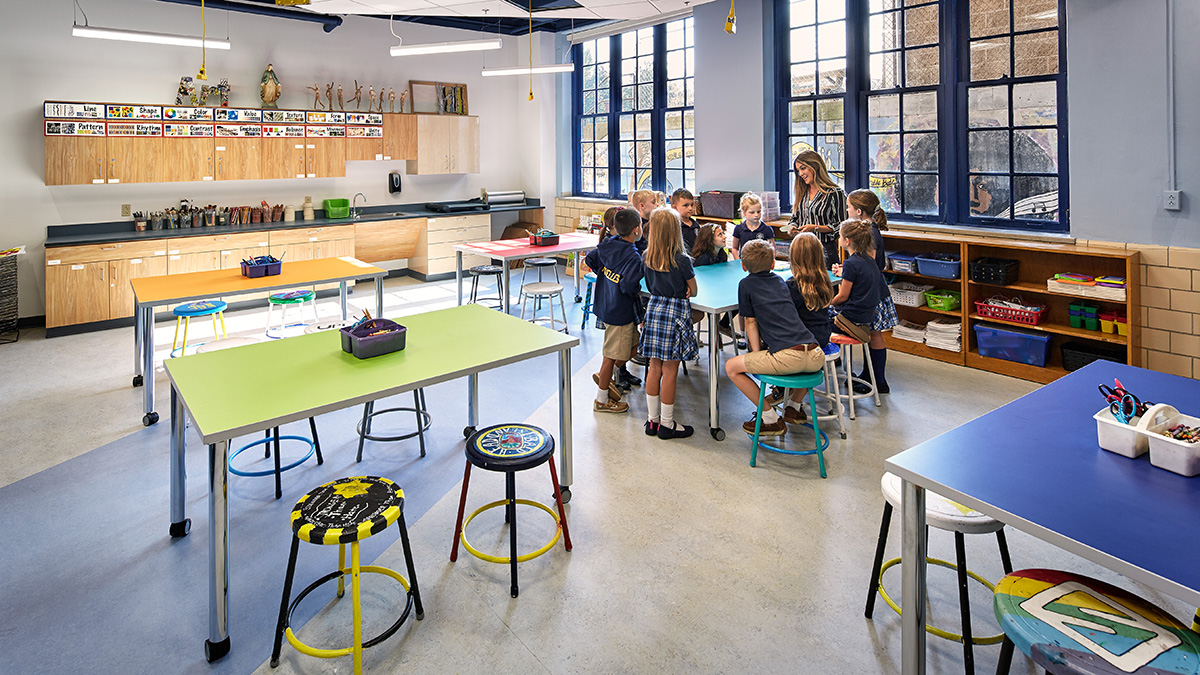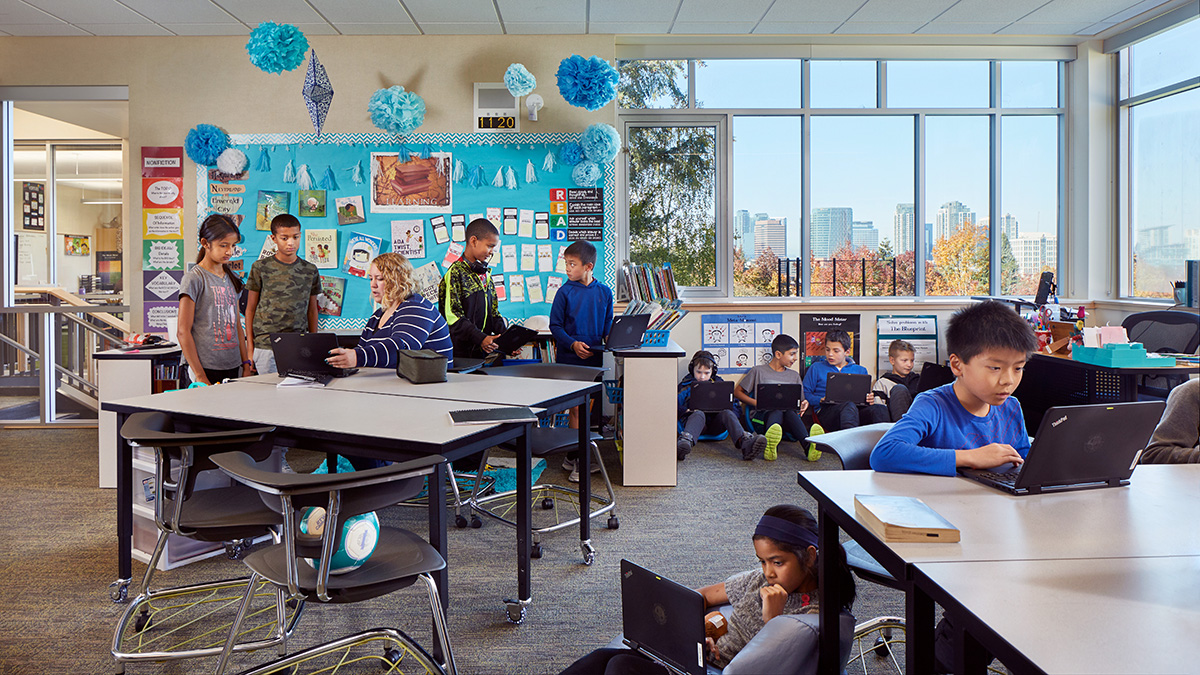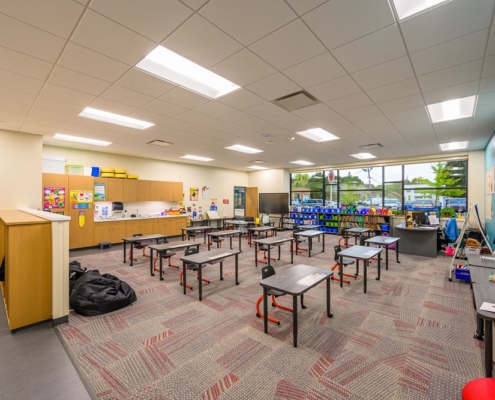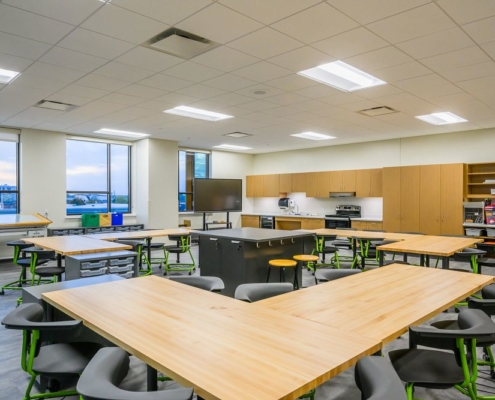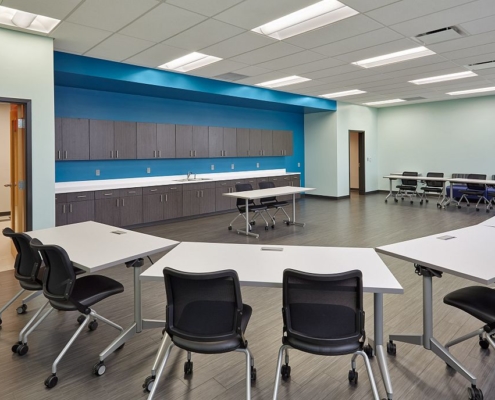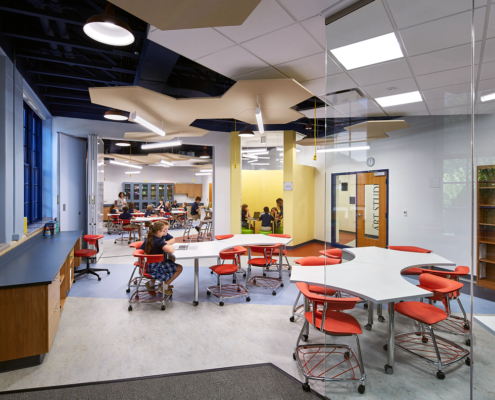Students can spend up to seven hours a day in a K-12 classroom, so it’s no wonder that the classroom’s design and ambiance can have a major impact on students’ mental health and morale. A study from the American Sociological Association shows that something as simple as access to child-friendly furnishings correlates with fewer mental health issues among students.
An inviting classroom arrangement can support social interaction and empower students in the process.
Here are some strategies to consider for developing a happy, healthy classroom that students are eager to enter.
Tips for Approaching Your Classroom Design
As you approach how to design a classroom to accommodate different learning styles, it helps to keep a few general guidelines in mind.
Engage furniture. Student morale in learning has a direct correlation to the physical environment. Our research found that classroom furniture alone can increase the amount of student participation and learning retention by more than one-third.
Define objectives. Support your goals for interaction and instruction by outlining your pedagogical intention. For instance, an active learning classroom meant to foster a playful, social climate will look different from a classroom designed to direct students’ attention at the educator.
Solicit participation. Allow students to help create their physical learning environment. When students have agency over their learning space, they are more likely to look forward to school and be engaged.
Creating a Strong Learning Environment
By maximizing the use of lighting and seating arrangements, you can help bring a sense of life and well-being to the classroom.
Classroom Lighting
Access to windows and natural light has a significant impact on student well-being. Limited exposure to sunlight can even lead to depression.
We understand you only have so much control over the design of your classroom. If you’re working with limited windows, make sure to keep bookcases, shelves and artwork out of the way to maximize any natural light. Adding plants and natural elements can help improve well-being, too. A University of Illinois study found that a view of greenery can reduce students’ stress levels and improve their test performance.
At the other end of the spectrum, large windows without adequate shades or other room darkeners can create a glare that makes visual media difficult to use, impeding student learning in the process. If your room has limitations when it comes to adjustable shades, get creative by constructing a mosaic out of tissue paper over the windows. You can even change it with the seasons or match the themes of your lesson plans.
Classroom Seating Arrangements
When considering interaction and instruction, different classroom style seating arrangements each have a unique set of advantages.
- Rows of seats: This traditional classroom design is well-suited to instructor-focused or non-interactive lessons, as well as test-taking. It’s not meant for interaction, given that students in the front row can’t see their peers and those in the back of the room mostly see the backs of their classmates’ heads.
- Groups of tables and chairs: This arrangement is excellent for group work because it allows students to collaborate on a shared surface. Ideal for maker-centered classrooms, you can configure mobile furniture to make dynamic groups. You can also rearrange furniture on the fly to bring students together for other purposes.
- Semicircle of seating: This layout encourages interaction and gives students a line of sight to their classmates. It also provides younger students a space to gather in the middle of the floor. It’s a great layout for fostering student relationships, creating an open environment and establishing a sense of community.
If you’re inspired to try a new layout for your K-12 classroom, or prepare your new education facility, contact The Systemcenter today!


